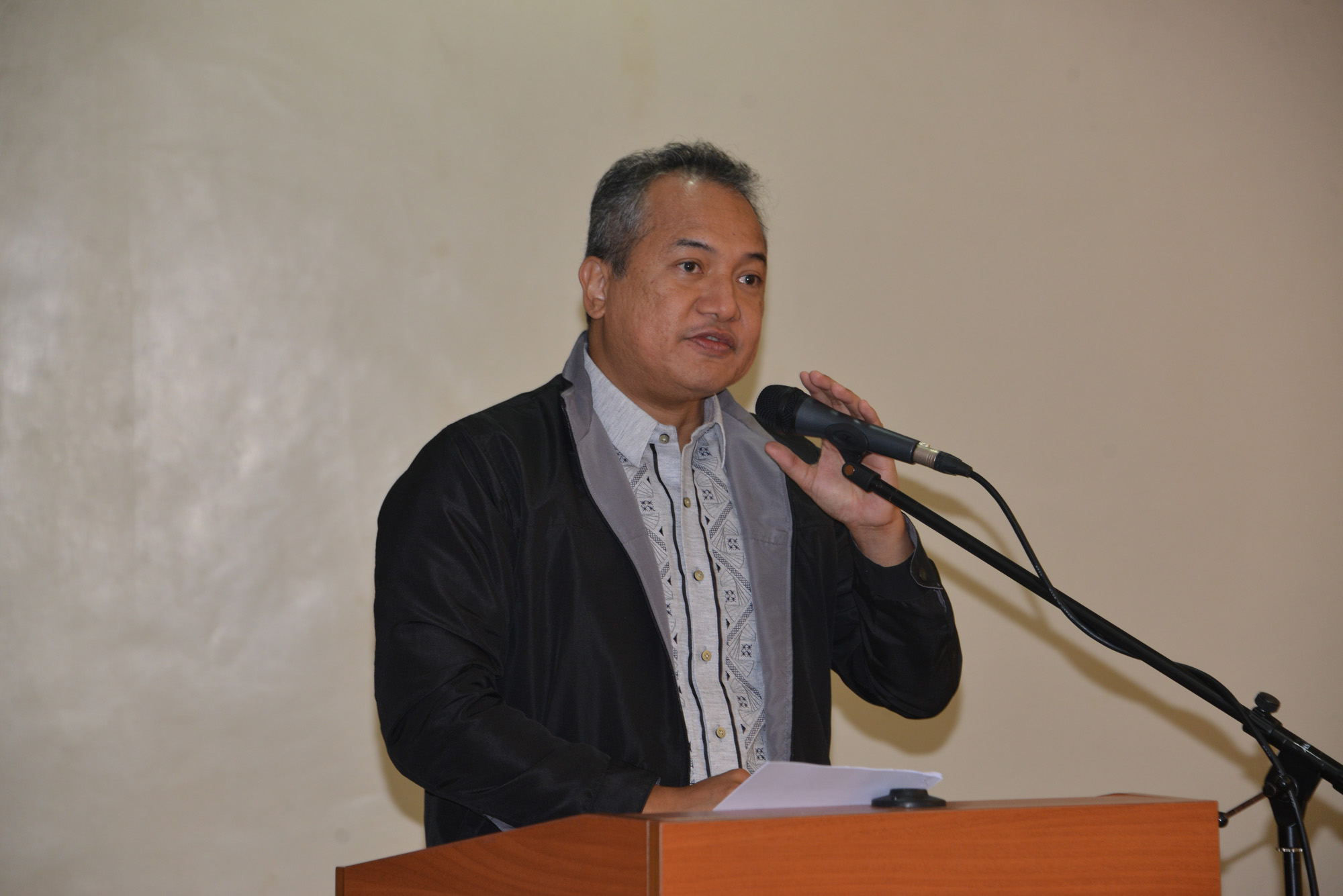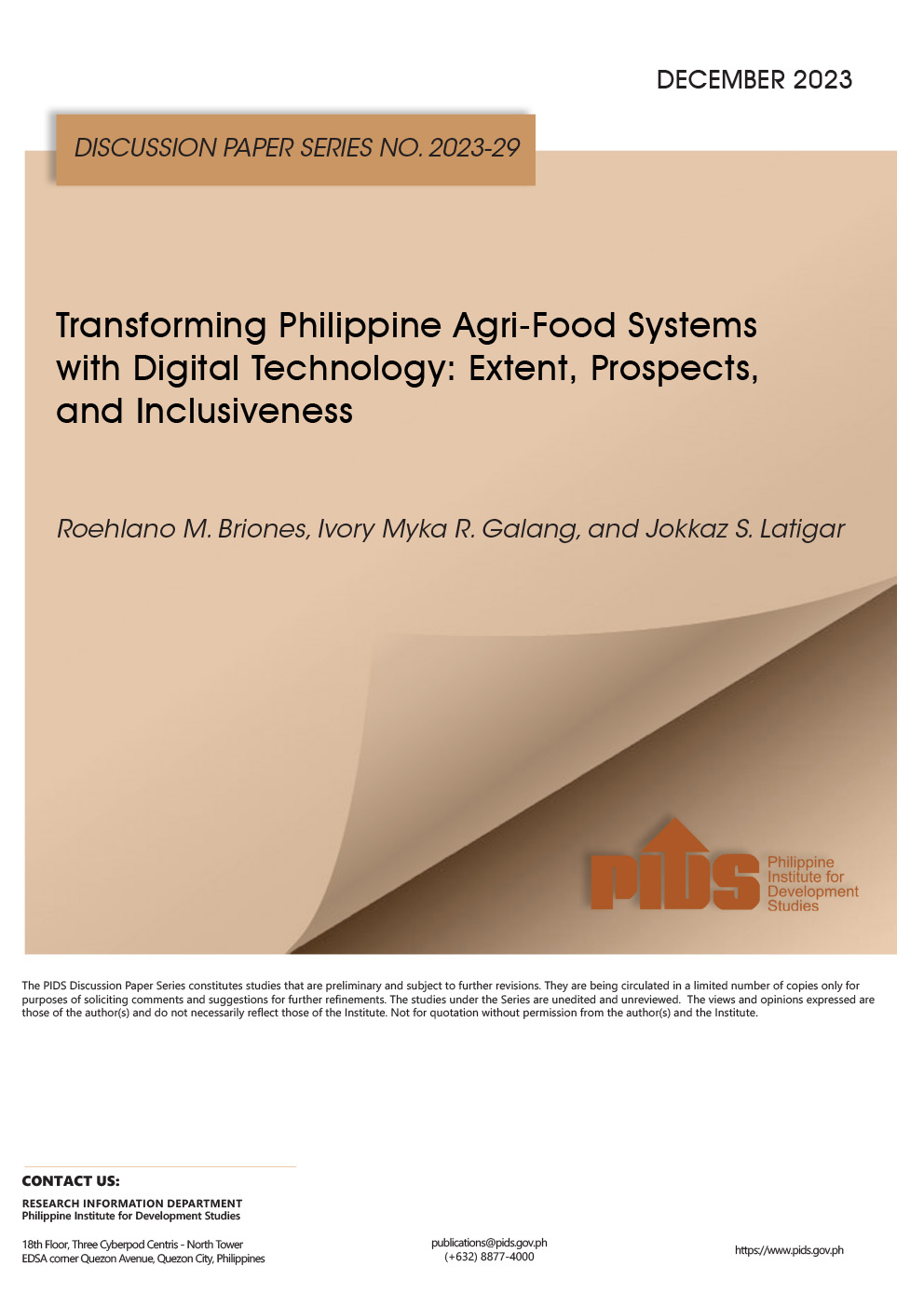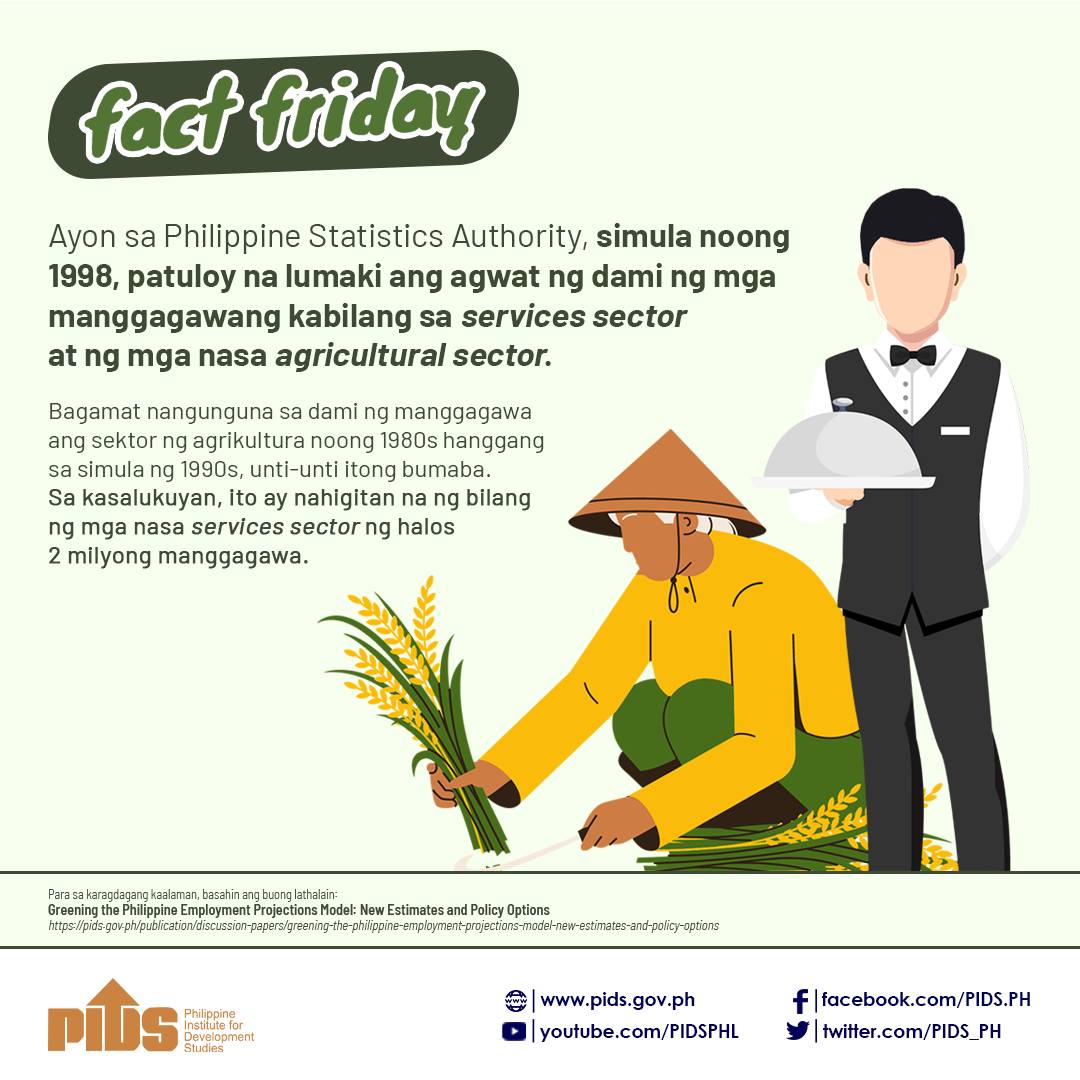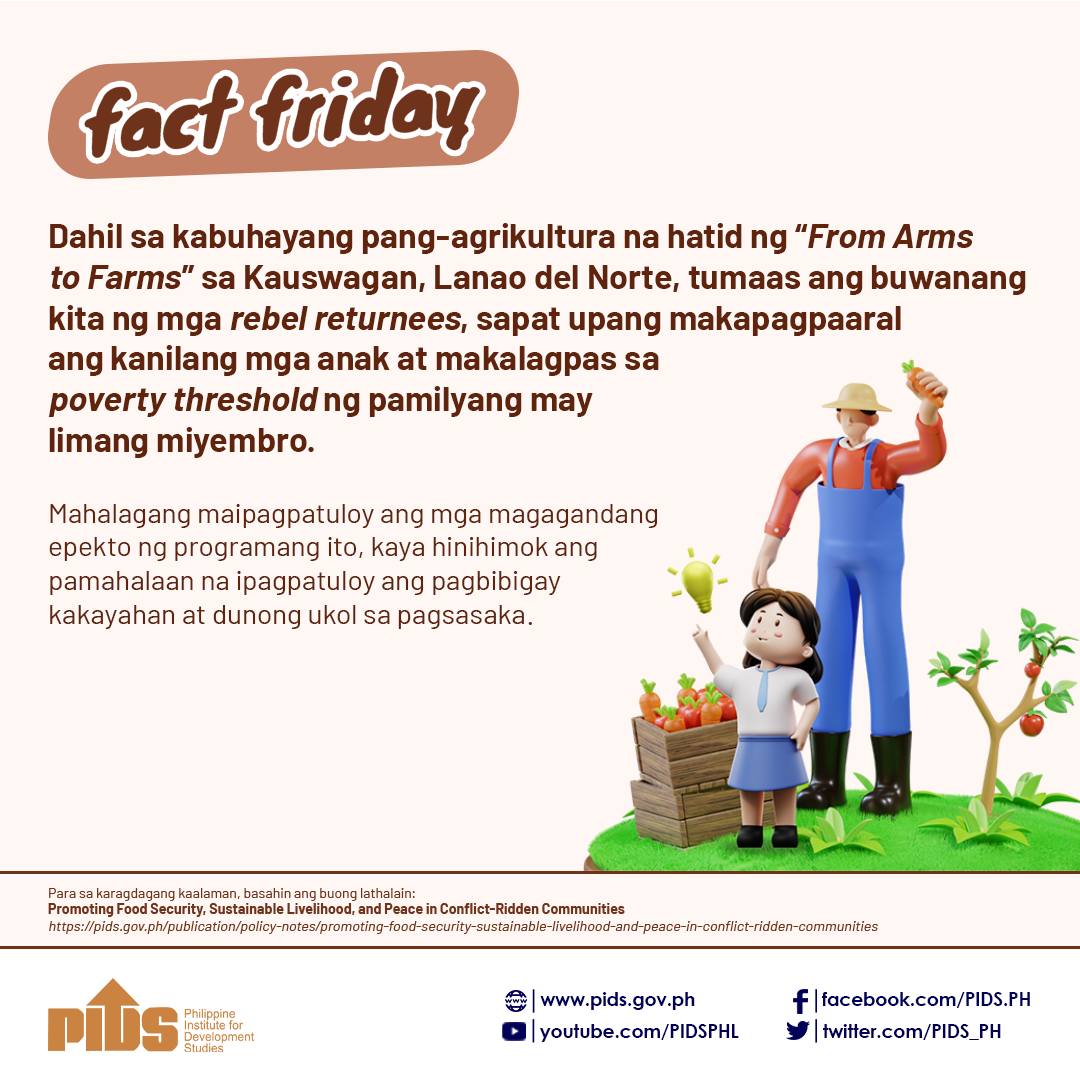
Efforts should focus on accelerating the compensation for farmers who are affected by the Rice Tariffication Law.
This was what Roehlano Briones, senior research fellow and agricultural trade expert at state think tank Philippine Institute for Development Studies (PIDS), emphasized at the knowledge-sharing forum jointly organized by PIDS and the Congressional Policy and Budget Research Department of the House of Representatives recently.
In his presentation on the assessment of the Rice Tariffication Law, he stressed that using the 2018 data—the year before the law was passed—to assess its impacts is “not a good starting point”.
“2018 was an extraordinary year. If you start from that base, you’re really [going to] get skewed. This is not a picture of the normal rice market by any means,” Briones said. He explained that in a year, the normal price range or the gap between the highest and lowest price for palay is at 12 percent only, but in 2018, it “went up to almost 90 percent”. Likewise, retail price range was normally at 1.5 percent, but it widened to 14.2 percent in 2018.
By analyzing 2019 data from the Philippine Statistics Authority using the before-after method (quarter-to-quarter decrease in price), Briones was able to calculate a PHP 8.22-billion loss in palay revenues from April to September of the year—a figure he said is more modest compared to earlier reports of PHP 60 billion. Meanwhile, the same method showed a PHP 4.9-billion gain to consumers.
In terms of long-term impact, Briones used two scenarios (with and without tariffication) to get projections for the next 10 years at two intervals, from 2019 to 2024 and from 2025 to 2030. On the side of consumers, they are seen to benefit around PHP 197 billion “every year for the first five years”.
Briones added that in 10 years, “if we value all of those benefits and convert them as if we got them today, the equivalent value is PHP 2.26 trillion.” He noted that the biggest gain will be on the top income group, at around PHP 367 billion, while the least gain is on the bottom income group at around PHP 87 billion. He, however, pointed out that considering the wealth level of the upper income group, the latter is still a bigger share.
Despite positive impacts on consumers, the law poses a challenge to palay farmers who will feel the brunt of the losses in the next five years.
Results showed that with tariffication, “imports over the decade will grow at about 29 percent”—a 22-percent difference from the projected growth of 7.1 percent without tariffication. In the next five years, it will grow at 52.8 percent under the law.
On the production side, projections for the next 10 years showed a -1.8-percent growth under the law versus a 2.5-percentage growth without tariffication. For the five-year projection under the law, a -5.7-percent growth rate is seen, in contrast to a 2.8-percent growth without tariffication.
Projections for area harvested for the next 10 years see a -1.1-percent growth under the law versus a 0.9-percent growth without tariffication. For the five-year projection under the law, results showed a -3.3-percent growth in contrast to a 1-percent growth without it.
Meanwhile, farmgate prices by 2030 are seen to grow at only 0.8-percent under the law, in contrast to the projected 1.6-percent growth without tarrification. For retail prices, there will be a -1.7-percent growth by 2030 under the law in contrast to a 0.6-percent growth without tariffication.
The growth in farmers’ income is also important to note. By 2030, only a 0.9-percent growth is projected under the law—a -1.8-percent difference from the 2.7-percent growth rate without tariffication. For the next five years, the farmers’ income growth rate will be flat compared to a 2.5- percent projected growth without tariffication.
Despite the projected results, Briones said the government should continue implementing the Rice Tariffication Law given its long-term benefits to consumers but it should hasten the compensation for rice farmers affected by the reform.
“If you want Philippine society to benefit in the long run, we should maintain the law. Otherwise, say goodbye to the PHP 2.26 trillion and go back to your previous policy where Filipino consumers were paying like 100 percent more compared to consumers in Viet Nam or New Delhi,” Briones said.
He, however, emphasized the negative impact on farmers, saying that the government should “provide offsetting compensation" to them.
“We do not deny the analysis [that] clearly points out the loss suffered by palay farmers. They actually have a point when they ask, ‘Why are we [going to] take a hit for the Filipino consumer?’ If the consumers really benefit, maybe they [rice farmers] can share in the benefit,” Briones said.
The law provides a PHP 10-billion Rice Fund to help local farmers. Briones said that additional revenues from the law can be used for other purposes such as financial assistance, expanded crop insurance on rice, and crop diversification program for erstwhile rice farmers. Briones urged the government to accelerate the delivery of the compensation to affected farmers.
Speaking at the same forum, PAKISAMA National Coordinator Raul Socrates Banzuela called on more inclusion for farmers by capacitating and developing them through the establishment of cooperatives. ###
This was what Roehlano Briones, senior research fellow and agricultural trade expert at state think tank Philippine Institute for Development Studies (PIDS), emphasized at the knowledge-sharing forum jointly organized by PIDS and the Congressional Policy and Budget Research Department of the House of Representatives recently.
In his presentation on the assessment of the Rice Tariffication Law, he stressed that using the 2018 data—the year before the law was passed—to assess its impacts is “not a good starting point”.
“2018 was an extraordinary year. If you start from that base, you’re really [going to] get skewed. This is not a picture of the normal rice market by any means,” Briones said. He explained that in a year, the normal price range or the gap between the highest and lowest price for palay is at 12 percent only, but in 2018, it “went up to almost 90 percent”. Likewise, retail price range was normally at 1.5 percent, but it widened to 14.2 percent in 2018.
By analyzing 2019 data from the Philippine Statistics Authority using the before-after method (quarter-to-quarter decrease in price), Briones was able to calculate a PHP 8.22-billion loss in palay revenues from April to September of the year—a figure he said is more modest compared to earlier reports of PHP 60 billion. Meanwhile, the same method showed a PHP 4.9-billion gain to consumers.
In terms of long-term impact, Briones used two scenarios (with and without tariffication) to get projections for the next 10 years at two intervals, from 2019 to 2024 and from 2025 to 2030. On the side of consumers, they are seen to benefit around PHP 197 billion “every year for the first five years”.
Briones added that in 10 years, “if we value all of those benefits and convert them as if we got them today, the equivalent value is PHP 2.26 trillion.” He noted that the biggest gain will be on the top income group, at around PHP 367 billion, while the least gain is on the bottom income group at around PHP 87 billion. He, however, pointed out that considering the wealth level of the upper income group, the latter is still a bigger share.
Despite positive impacts on consumers, the law poses a challenge to palay farmers who will feel the brunt of the losses in the next five years.
Results showed that with tariffication, “imports over the decade will grow at about 29 percent”—a 22-percent difference from the projected growth of 7.1 percent without tariffication. In the next five years, it will grow at 52.8 percent under the law.
On the production side, projections for the next 10 years showed a -1.8-percent growth under the law versus a 2.5-percentage growth without tariffication. For the five-year projection under the law, a -5.7-percent growth rate is seen, in contrast to a 2.8-percent growth without tariffication.
Projections for area harvested for the next 10 years see a -1.1-percent growth under the law versus a 0.9-percent growth without tariffication. For the five-year projection under the law, results showed a -3.3-percent growth in contrast to a 1-percent growth without it.
Meanwhile, farmgate prices by 2030 are seen to grow at only 0.8-percent under the law, in contrast to the projected 1.6-percent growth without tarrification. For retail prices, there will be a -1.7-percent growth by 2030 under the law in contrast to a 0.6-percent growth without tariffication.
The growth in farmers’ income is also important to note. By 2030, only a 0.9-percent growth is projected under the law—a -1.8-percent difference from the 2.7-percent growth rate without tariffication. For the next five years, the farmers’ income growth rate will be flat compared to a 2.5- percent projected growth without tariffication.
Despite the projected results, Briones said the government should continue implementing the Rice Tariffication Law given its long-term benefits to consumers but it should hasten the compensation for rice farmers affected by the reform.
“If you want Philippine society to benefit in the long run, we should maintain the law. Otherwise, say goodbye to the PHP 2.26 trillion and go back to your previous policy where Filipino consumers were paying like 100 percent more compared to consumers in Viet Nam or New Delhi,” Briones said.
He, however, emphasized the negative impact on farmers, saying that the government should “provide offsetting compensation" to them.
“We do not deny the analysis [that] clearly points out the loss suffered by palay farmers. They actually have a point when they ask, ‘Why are we [going to] take a hit for the Filipino consumer?’ If the consumers really benefit, maybe they [rice farmers] can share in the benefit,” Briones said.
The law provides a PHP 10-billion Rice Fund to help local farmers. Briones said that additional revenues from the law can be used for other purposes such as financial assistance, expanded crop insurance on rice, and crop diversification program for erstwhile rice farmers. Briones urged the government to accelerate the delivery of the compensation to affected farmers.
Speaking at the same forum, PAKISAMA National Coordinator Raul Socrates Banzuela called on more inclusion for farmers by capacitating and developing them through the establishment of cooperatives. ###












